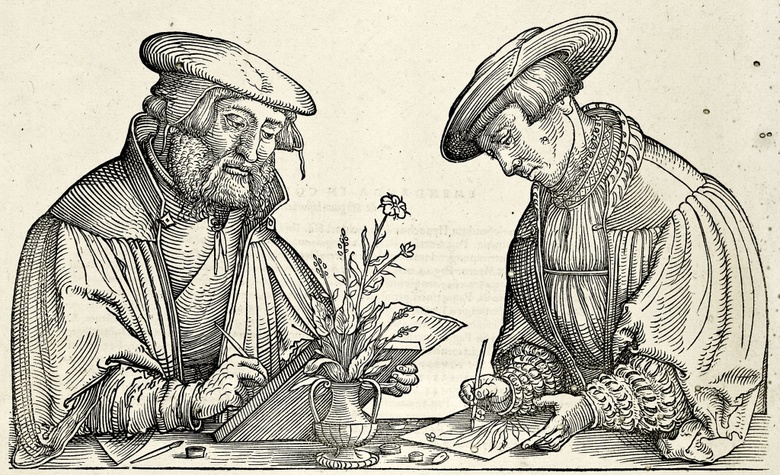We're taking part in the "Colour Our Collections" event! From 6-10 February libraries around the world are putting their collections online for you to colour in.
Download colouring sheet versions of some of the illustrations to two of our amazing rare books - The "Garden of Health" (Hortus Sanitatis) of 1491, and Leonhart Fuchs "Noble Commentaries on the History of Plants" of 1542.
pi f58 Fuc
Leonhart Fuchs. De historia stirpium commentarii insignes, maximis impensis et vigiliis elaborati, adiectis earundem viuis plusquam quingentis imaginibus, nunquam antea ad naturae imitationem artificiosicis efficis & expressis ... Basel: Isingrin, 1542.
[Notable commentaries on the history of plants…]
Leonhart Fuchs (1501-1566) was both a physician and a botanist and is known as the ‘Father of German botany’. The History of plants is one of the great Northern Renaissance herbals which took Fuchs nearly thirty years to complete. Primarily intended for physicians, it describes 497 plants and is illustrated by over 500 superb woodcuts based upon first-hand observation. Fuchs described the pharmacological aspect of each plant and stripped away much of the arcane folklore of earlier herbals.
Fuchs was keen to stress the importance of botanical knowledge for anyone in the medical profession and insisted that his students observe plants from life and produce accurate and authentic images of plants. The remarkable woodcuts in his herbal are delicate and precise line drawings. Most unusually, portraits of the artist Albrecht Meyer, the block-cutter Heinrich Füllmaurer and the engraver Veit Rudolf Speckle appear at the end of the herbal, emphasising the importance of the illustrations to the work.

Download the colouring sheet
Hortus Sanitatis (Inc 3)
De Hortus Sanitatis, or Garden of Health, was first produced in Mainz, Germany, in 1491. A fascinating fusion of science and folklore, it is one of the earliest European medical texts, and one of the most important of the great medieval herbals.
The book contains treatises on plants and herbs, animals, fishes and minerals, as well as and the diagnosis of medical ailments by the appearance of the urine. Observations of nature are frequently accompanied by mythical fantasies and fables, however the interpretation of herbal substances is of great interest. Amber, for example, is seen as being generated under the sea, after the manner of fungi which arise on land – the anonymous author’s contribution to a debate as to whether the substance was the fruit of a tree growing by the sea or produced by fish.
There are also striking depictions of contemporary medical practice. The book opens with a full-page wood-cutrepresenting a group of male figures, who appear to be engaged in discussing some medical or botanical problem. Elsewhere, there are depictions of a surgery and an apothecary’s shop.

Download the colouring sheet
You can find out more about the fascinating Hortus Sanitatis in this Collections Highlight post by our Senior Rare Books Librarian, Keith O'Sullivan.


